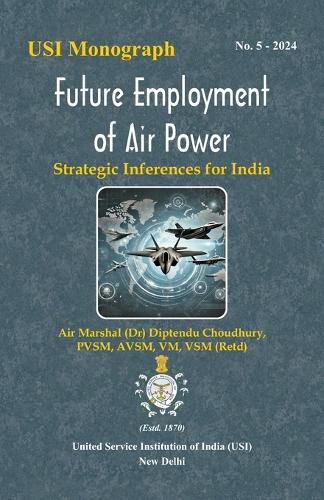Readings Newsletter
Become a Readings Member to make your shopping experience even easier.
Sign in or sign up for free!
You’re not far away from qualifying for FREE standard shipping within Australia
You’ve qualified for FREE standard shipping within Australia
The cart is loading…






This title is printed to order. This book may have been self-published. If so, we cannot guarantee the quality of the content. In the main most books will have gone through the editing process however some may not. We therefore suggest that you be aware of this before ordering this book. If in doubt check either the author or publisher’s details as we are unable to accept any returns unless they are faulty. Please contact us if you have any questions.
The varied employment of air power in the ongoing conflicts in Ukraine and Gaza highlights its contemporary dynamics. Its continuous evolution since its inception in warfare has historically contributed to an inadequate understanding of its capabilities and challenges in optimising its leverage. The differing contexts of its application in wars and conflicts have led to diverse perceptions of air power's utility, alongside periodic attempts to question its relevance or anticipate its premature decline as a military instrument. Its relentless, technology-driven development has expanded air power's capabilities, capacities, and employment options. Far from diminishing, air power will remain a potent element in the arsenal of nations' comprehensive national power and is likely to do so in the foreseeable future. Given India's unique threat landscape, characterised by two adversarial air forces, the relevance of the vertical dimension in warfare and its global application provide valuable strategic insights for India's security. The author examines the contemporary use of air power in Russia's and Israel's recent conflicts to extract key strategic inferences within India's distinct threat context. This involves addressing two formidable adversarial air forces, integral to the military strategies of China and Pakistan, and emphasises the importance of multi-domain, joint-force air power in safeguarding India's national security and interests.
$9.00 standard shipping within Australia
FREE standard shipping within Australia for orders over $100.00
Express & International shipping calculated at checkout
This title is printed to order. This book may have been self-published. If so, we cannot guarantee the quality of the content. In the main most books will have gone through the editing process however some may not. We therefore suggest that you be aware of this before ordering this book. If in doubt check either the author or publisher’s details as we are unable to accept any returns unless they are faulty. Please contact us if you have any questions.
The varied employment of air power in the ongoing conflicts in Ukraine and Gaza highlights its contemporary dynamics. Its continuous evolution since its inception in warfare has historically contributed to an inadequate understanding of its capabilities and challenges in optimising its leverage. The differing contexts of its application in wars and conflicts have led to diverse perceptions of air power's utility, alongside periodic attempts to question its relevance or anticipate its premature decline as a military instrument. Its relentless, technology-driven development has expanded air power's capabilities, capacities, and employment options. Far from diminishing, air power will remain a potent element in the arsenal of nations' comprehensive national power and is likely to do so in the foreseeable future. Given India's unique threat landscape, characterised by two adversarial air forces, the relevance of the vertical dimension in warfare and its global application provide valuable strategic insights for India's security. The author examines the contemporary use of air power in Russia's and Israel's recent conflicts to extract key strategic inferences within India's distinct threat context. This involves addressing two formidable adversarial air forces, integral to the military strategies of China and Pakistan, and emphasises the importance of multi-domain, joint-force air power in safeguarding India's national security and interests.